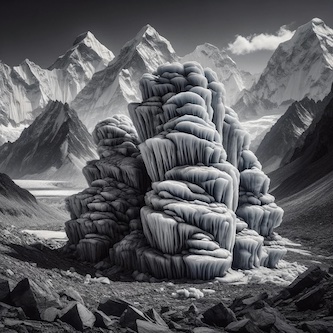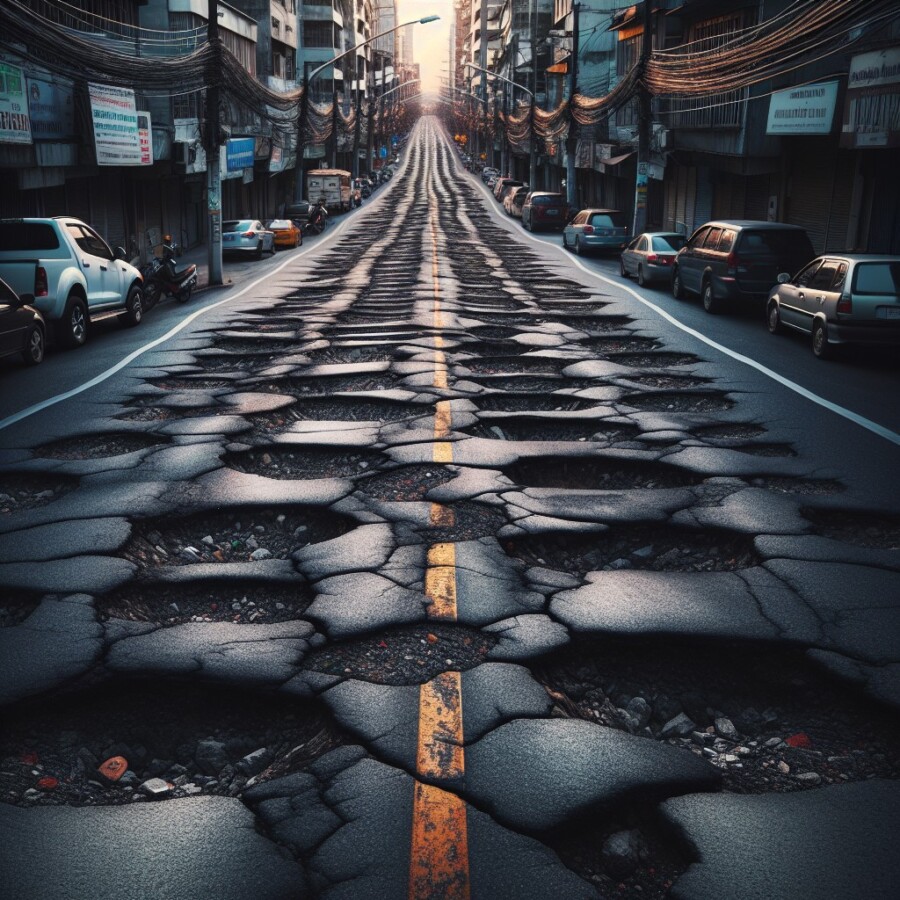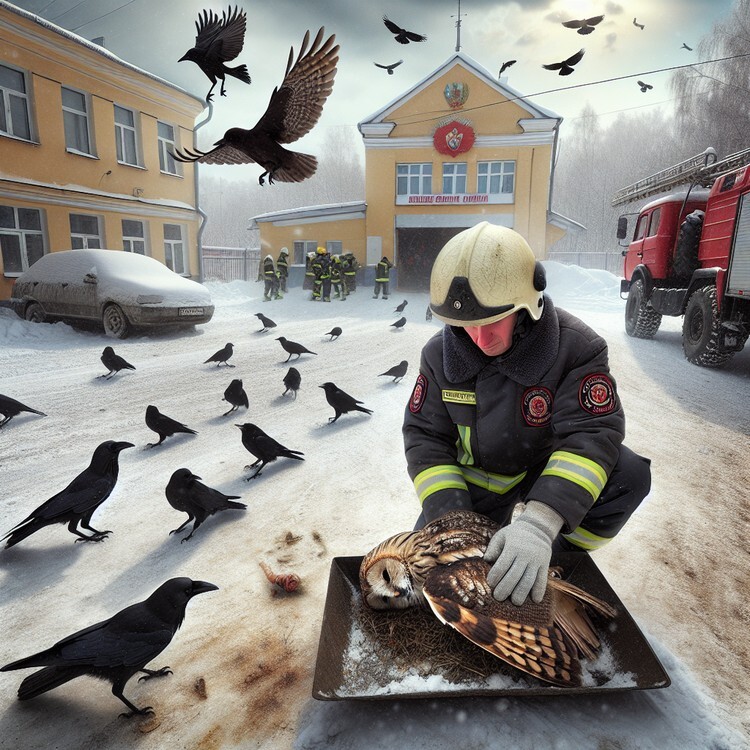The Ladakh region in northern India is facing the increasing threat of climate change. In the past, Ladakh enjoyed 300 days of sunshine and minimal rainfall, making floods virtually unheard of. However, in recent years, the region has experienced devastating floods due to climate change. These floods, which used to occur once every seven decades, have now happened four times in less than 10 years. The changing climate has also led to unpredictable snowfall and the retreat of glaciers, causing water scarcity and impacting the livelihoods of the local people.
The lack of water has resulted in a decrease in meadows, making it unviable for farmers to keep large flocks of pashmina goats. As a result, many herders are giving up their traditional livelihoods and migrating to other parts of India in search of non-pastoral work. Apricot farmers are also struggling to find water for their crops and are leaving the region in large numbers. The changing landscape and water scarcity have had a profound impact on the lives and livelihoods of the Ladakhi people.
Despite the challenges posed by climate change, there is hope for the region. Engineer Sonam Wangchuk came up with an innovative solution to address the water scarcity issue. He and his team developed a method to freeze water in the shape of cones, known as ice stupas. These ice stupas, which can reach heights of over 100ft, provide a water supply for the community during the dry spring season. They have not only become a practical solution but also a source of entertainment, with competitions for the tallest stupa taking place annually.
However, Wangchuk emphasizes that technical innovations alone are not enough to address the issue of climate change. He wants to use ice stupas as a way to raise awareness about the need for a change in behavior and to highlight the injustice faced by the Ladakhi people, who are paying the price for carbon emissions made elsewhere. Climate change is a global problem, and it is crucial for countries to come together to combat this threat and ensure the survival of vulnerable regions like Ladakh.
As a photographer who has traveled extensively in South Asia, I have witnessed the impact of climate change in various regions. Ladakh is not alone in its fight against climate change. It is time for countries like India, China, and Pakistan to unite and strengthen their resilience against this common enemy. Climate change has the potential to destroy river basins and threaten densely populated regions. By working together, we can create a sustainable future and protect vulnerable communities from the devastating effects of climate change.
Original news source: Climate change: The villagers building 100ft ice towers (BBC)
Listen
Slow
Normal
Fast
Group or Classroom Activities
Warm-up Activities:
– News Summary
Instructions: In pairs, students will read the article and then write a summary of the main points in their own words. They will then share their summaries with another pair and compare their answers.
– Word Association
Instructions: In small groups, students will take turns saying a word or phrase that they associate with the topic of climate change. They can use words from the article or their own ideas. The goal is to keep the conversation going and see how many different associations they can come up with.
– Sketch It
Instructions: Each student will choose a specific aspect or idea from the article and create a quick sketch to represent it. Afterward, they will share their sketches with a partner and explain what they drew and why.
– Opinion Poll
Instructions: In pairs or small groups, students will discuss their opinions on climate change and its impact on vulnerable regions like Ladakh. They can use the information from the article to support their arguments. Afterward, each group will present their opinions to the class and engage in a class-wide discussion.
– Future Predictions
Instructions: In small groups, students will discuss and make predictions about the future of Ladakh and other vulnerable regions in the face of climate change. They can consider possible solutions, challenges, and potential outcomes. Afterward, each group will share their predictions with the class and discuss the different perspectives.
Comprehension Questions:
1. How has climate change affected the Ladakh region in northern India?
2. How often did floods used to occur in Ladakh in the past?
3. How has the changing climate impacted water scarcity in Ladakh?
4. Why are farmers and herders in Ladakh giving up their traditional livelihoods?
5. What innovative solution did Engineer Sonam Wangchuk develop to address water scarcity in Ladakh?
6. What is the purpose of the ice stupas besides providing water supply?
7. According to the article, why is it important for countries to come together to combat climate change?
8. What is the potential impact of climate change on river basins and densely populated regions?
Go to answers ⇩
Listen and Fill in the Gaps:
The Ladakh region in northern India is facing the increasing threat of climate change. In the past, Ladakh enjoyed 300 days of sunshine and (1)______ rainfall, making floods virtually unheard of. However, in recent years, the region has experienced devastating floods due to climate change. These floods, which used to occur once every seven (2)______, have now happened four times in less than 10 years. The changing climate has also led to unpredictable snowfall and the retreat of glaciers, causing (3)______ scarcity and impacting the livelihoods of the local (4)______.
The lack of water has resulted in a decrease in meadows, making it unviable for farmers to keep large flocks of pashmina goats. As a (5)______, many herders are giving up their traditional livelihoods and migrating to other parts of India in (6)______ of non-pastoral work. Apricot farmers are also struggling to find water for their crops and are (7)______ the region in (8)______ numbers. The changing landscape and water scarcity have had a profound impact on the lives and livelihoods of the Ladakhi people.
Despite the challenges posed by climate change, there is hope for the region. Engineer Sonam Wangchuk came up with an innovative solution to address the water scarcity issue. He and his team developed a method to freeze water in the shape of cones, known as ice (9)______. These ice stupas, which can reach heights of over 100ft, provide a water (10)______ for the community during the dry spring season. They have not only become a practical solution but also a source of entertainment, with (11)______ for the tallest stupa taking place annually.
However, Wangchuk emphasizes that technical innovations alone are not enough to address the issue of climate change. He (12)______ to use ice stupas as a way to raise awareness about the need for a change in behavior and to highlight the injustice faced by the Ladakhi people, who are paying the price for carbon emissions made elsewhere. Climate change is a global problem, and it is crucial for (13)______ to come together to combat this threat and ensure the survival of vulnerable (14)______ like Ladakh.
As a photographer who has traveled extensively in South Asia, I have witnessed the impact of climate change in various regions. Ladakh is not alone in its fight against climate change. It is time for countries like India, China, and (15)______ to unite and strengthen their (16)______ against this common enemy. Climate change has the potential to destroy river basins and threaten densely populated regions. By working together, we can create a sustainable future and protect vulnerable communities from the devastating effects of climate change.
Go to answers ⇩
Discussion Questions:
Students can ask a partner these questions, or discuss them as a group.
1. How do you think the people of Ladakh feel about the increasing threat of climate change in their region?
2. Do you think it is fair that the Ladakhi people are paying the price for carbon emissions made elsewhere? Why or why not?
3. How would you feel if you had to give up your traditional livelihood and migrate to another part of the country due to climate change?
4. What do you think can be done to raise awareness about the need for a change in behavior to combat climate change?
5. How important do you think it is for countries to come together and unite against the common enemy of climate change? Why or why not?
6. What do you think are some potential consequences of climate change on river basins and densely populated regions?
7. How do you think the Ladakhi people feel about the innovative solution of ice stupas? Do you think they see them as just a practical solution or also as a source of entertainment?
8. How do you think the changing climate and water scarcity have impacted the lives and livelihoods of the Ladakhi people?
9. Do you think technical innovations alone are enough to address the issue of climate change? Why or why not?
10. How do you think the Ladakhi people feel about the increasing frequency of devastating floods in their region?
11. Do you think it is the responsibility of countries like India, China, and Pakistan to take a leading role in combating climate change? Why or why not?
12. What do you think are some potential long-term effects of climate change on vulnerable communities like Ladakh?
13. How do you think the Ladakhi people feel about the decrease in meadows and the impact on farmers and herders?
14. How would you feel if your region experienced unpredictable snowfall and the retreat of glaciers due to climate change?
15. Do you think the ice stupas in Ladakh can serve as a model for other regions facing water scarcity due to climate change? Why or why not?
Individual Activities
Vocabulary Meanings:
Match each word to its meaning.
Words:
1. Ladakh
2. floods
3. climate change
4. water scarcity
5. ice stupas
6. behavior
7. carbon emissions
8. resilience
Meanings:
(a) Conical structures made of frozen water to provide water supply
(b) The release of greenhouse gases into the atmosphere
(c) Insufficient availability of water
(d) Actions and attitudes of individuals or groups
(e) The region in northern India facing climate change
(f) Devastating natural disasters caused by excessive rainfall
(g) The ability to recover and adapt to challenges
(h) The phenomenon of long-term shifts in weather patterns
Go to answers ⇩
Multiple Choice Questions:
1. What is the main issue facing the Ladakh region in northern India?
(a) Climate change
(b) Water scarcity
(c) Flooding
(d) Glacial retreat
2. How often did floods used to occur in Ladakh?
(a) Once every ten years
(b) Once every seven decades
(c) Once every century
(d) Once every month
3. What impact has water scarcity had on farmers in Ladakh?
(a) Migration to other parts of India
(b) Decrease in pashmina goat herds
(c) Decrease in meadows
(d) All of the above
4. What innovative solution did Sonam Wangchuk develop to address water scarcity?
(a) Solar panels
(b) Wind turbines
(c) Desalination plants
(d) Ice stupas
5. What is the purpose of the ice stupas, besides providing water?
(a) Entertainment
(b) Raising awareness about climate change
(c) Highlighting injustice faced by Ladakhi people
(d) All of the above
6. According to the article, who should come together to combat climate change?
(a) Countries in South Asia
(b) All countries globally
(c) Countries like India, China, and Pakistan
(d) Only countries facing the immediate threat
7. What potential consequences does climate change have for river basins and densely populated regions?
(a) Flooding
(b) Water scarcity
(c) All of the above
(d) Destruction
8. What is the main message of the article?
(a) Ladakh is the only region facing the threat of climate change
(b) Climate change is a global problem that requires collective action
(c) Technical innovations alone can solve the issue of climate change
(d) The Ladakhi people deserve compensation for the impact of climate change
Go to answers ⇩
True or False Questions:
1. Wangchuk believes that technical innovations alone are enough to address climate change and wants to use ice stupas to minimize awareness and downplay the injustice faced by the Ladakhi people.
2. Many herders and apricot farmers in Ladakh are leaving the region in search of non-pastoral work due to the impact of climate change on their livelihoods.
3. Ice stupas are frozen water cones that do not provide a water supply for the community during the dry spring season.
4. Engineer Sonam Wangchuk developed a solution to address water scarcity in Ladakh called ice stupas.
5. In the past, Ladakh had minimal rainfall and floods were rare, but now floods occur more frequently.
6. The changing climate has led to unpredictable snowfall and the retreat of glaciers in Ladakh.
7. Water scarcity has resulted in an increase in meadows, making it easier for farmers to keep pashmina goats.
8. The Ladakh region in northern India is not experiencing the effects of climate change, including increased flooding and water scarcity.
Go to answers ⇩
Write a Summary:
Write a summary of this news article in two sentences.
Writing Questions:
Answer the following questions. Write as much as you can for each answer.
1. How has climate change impacted the Ladakh region in northern India?
2. What are the consequences of water scarcity in Ladakh?
3. What innovative solution has Engineer Sonam Wangchuk developed to address water scarcity in Ladakh?
4. Why does Wangchuk believe that technical innovations alone are not enough to address climate change?
5. According to the author, why is it important for countries like India, China, and Pakistan to unite in the fight against climate change?
Answers
Comprehension Question Answers:
1. Climate change has led to devastating floods, unpredictable snowfall, and the retreat of glaciers in the Ladakh region of northern India. This has caused water scarcity and impacted the livelihoods of the local people.
2. In the past, floods in Ladakh used to occur once every seven decades.
3. The changing climate has led to the retreat of glaciers, causing water scarcity in Ladakh. The lack of water has resulted in a decrease in meadows and made it unviable for farmers to keep large flocks of pashmina goats. Apricot farmers are also struggling to find water for their crops.
4. Farmers and herders in Ladakh are giving up their traditional livelihoods due to water scarcity and the changing landscape. It has become unviable for them to continue farming or herding in the region.
5. Engineer Sonam Wangchuk developed a method to freeze water in the shape of cones, known as ice stupas, to address water scarcity in Ladakh. These ice stupas provide a water supply for the community during the dry spring season.
6. Besides providing a water supply, the ice stupas are also used to raise awareness about the need for a change in behavior and to highlight the injustice faced by the Ladakhi people. They serve as a reminder of the impact of climate change and the need for action.
7. It is important for countries to come together to combat climate change because it is a global problem. Climate change affects vulnerable regions like Ladakh, and by working together, countries can create a sustainable future and protect communities from its devastating effects.
8. Climate change has the potential to destroy river basins and threaten densely populated regions. Rising sea levels, extreme weather events, and changes in precipitation patterns can lead to flooding, displacement of communities, and loss of agricultural land. By addressing climate change, countries can mitigate these potential impacts and protect vulnerable regions.
Go back to questions ⇧
Listen and Fill in the Gaps Answers:
(1) minimal
(2) decades
(3) water
(4) people
(5) result
(6) search
(7) leaving
(8) large
(9) stupas
(10) supply
(11) competitions
(12) wants
(13) countries
(14) regions
(15) Pakistan
(16) resilience
Go back to questions ⇧
Vocabulary Meanings Answers:
1. Ladakh
Answer: (e) The region in northern India facing climate change
2. floods
Answer: (f) Devastating natural disasters caused by excessive rainfall
3. climate change
Answer: (h) The phenomenon of long-term shifts in weather patterns
4. water scarcity
Answer: (c) Insufficient availability of water
5. ice stupas
Answer: (a) Conical structures made of frozen water to provide water supply
6. behavior
Answer: (d) Actions and attitudes of individuals or groups
7. carbon emissions
Answer: (b) The release of greenhouse gases into the atmosphere
8. resilience
Answer: (g) The ability to recover and adapt to challenges
Go back to questions ⇧
Multiple Choice Answers:
1. What is the main issue facing the Ladakh region in northern India?
Answer: (a) Climate change
2. How often did floods used to occur in Ladakh?
Answer: (b) Once every seven decades
3. What impact has water scarcity had on farmers in Ladakh?
Answer: (c) Decrease in meadows
4. What innovative solution did Sonam Wangchuk develop to address water scarcity?
Answer: (d) Ice stupas
5. What is the purpose of the ice stupas, besides providing water?
Answer: (a) Entertainment
6. According to the article, who should come together to combat climate change?
Answer: (c) Countries like India, China, and Pakistan
7. What potential consequences does climate change have for river basins and densely populated regions?
Answer: (d) Destruction
8. What is the main message of the article?
Answer: (b) Climate change is a global problem that requires collective action
Go back to questions ⇧
True or False Answers:
1. Wangchuk believes that technical innovations alone are enough to address climate change and wants to use ice stupas to minimize awareness and downplay the injustice faced by the Ladakhi people. (Answer: False)
2. Many herders and apricot farmers in Ladakh are leaving the region in search of non-pastoral work due to the impact of climate change on their livelihoods. (Answer: True)
3. Ice stupas are frozen water cones that do not provide a water supply for the community during the dry spring season. (Answer: False)
4. Engineer Sonam Wangchuk developed a solution to address water scarcity in Ladakh called ice stupas. (Answer: True)
5. In the past, Ladakh had minimal rainfall and floods were rare, but now floods occur more frequently. (Answer: True)
6. The changing climate has led to unpredictable snowfall and the retreat of glaciers in Ladakh. (Answer: True)
7. Water scarcity has resulted in an increase in meadows, making it easier for farmers to keep pashmina goats. (Answer: False)
8. The Ladakh region in northern India is not experiencing the effects of climate change, including increased flooding and water scarcity. (Answer: False)
Go back to questions ⇧












